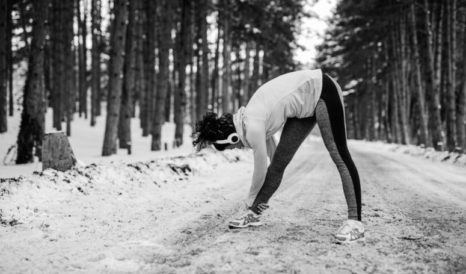How Cold Weather Could Be Affecting Your Knee Injury
Capital Orthopaedics discusses why cold weather affects joint pain and which knee injuries are more susceptible to cold weather.
You step out of the front door, and the cold hits you. You may just be out to walk the dog, or you may be heading out for a run, a spin on your bike, but within minutes, you feel pain in your knee. Perhaps it’s a niggling issue that you’ve been avoiding for a while. Perhaps you’ve never had knee pain before. But somehow, the cold air seems to have brought it on.
 The good news is that cold-related knee pain can, like the warning lights in your car, be a wake-up call to investigate the problem. All orthopaedic surgeons will recommend that you seek specialist medical advice if you have any ongoing knee problems – mainly because the sooner you diagnose a knee conditions, the easier it is to treat it.
The good news is that cold-related knee pain can, like the warning lights in your car, be a wake-up call to investigate the problem. All orthopaedic surgeons will recommend that you seek specialist medical advice if you have any ongoing knee problems – mainly because the sooner you diagnose a knee conditions, the easier it is to treat it.
If only one of your knees hurts, for example, and you are not just experiencing generalised joint pain, there’s a chance that it is caused by an injury or knee problem. Many people who suffer from arthritis also complain of more pain in their joints when it is cold.
So what does the science say?
Why Does Cold Weather Affect Joint Pain?
While there are a number of theories, there is no clear evidence for the reason our knees may be more painful when it’s cold. The chances are, all of the following may have an impact:
Barometric Pressure
When air pressure drops, it causes the gases and fluids in your joints to expand, which can press on surrounding nerves and cause pain. Colder temperatures can also shrink the tissues in our joints like our knees and hips, which can cause them to pull on the nerve endings and cause joint pain.
Nerve Sensitivity
It is well known that nerve pain increases as your circulation decreases. When the temperature drops, it can make people’s pain receptors a lot more sensitive.
Thickness of Joint Fluid
When the temperature drops, the fluids that enable friction-free movement and cushioning in your joints get thicker. This is likely to cause stiffness and possibly pain as you move your knee joints.
Inactivity
During the winter, we are generally less active than in lighter, warmer summer months. The less we use our joints, the more likely they are to stiffen up, especially as we get older and the structures in our knees become more brittle and start to deteriorate.
Cold & Humidity
Sufferers from arthritis are aware that their pain gets worse when there is more dampness in the air. There is no evidence as to why this is, but it is likely that cold, damp days will affect you more than cold, dry weather.
Which Knee Injuries Are More Susceptible to Cold Weather?
Any knee conditions can be susceptible to the cold – from arthritis to cartilage damage. Two common running injuries that become more painful during the cold are:
Runner’s Knee – this dull, aching pain behind the kneecap can be caused by a number of conditions, including osteoarthritis, tight or unbalanced muscles, IT band syndrome, cartilage damage or foot problems.
Patellar Tendonitis – the tendon that connects your kneecap to the muscles in the front of your lower leg can get sore and inflamed as a result of repetitive actions, overuse or unbalanced muscles.
The specialist orthopaedic surgeons in the Capital Orthopaedics team are highly experienced at diagnosing, advising and providing the right treatment for these and any other knee conditions. If you are concerned about any knee pain, get in touch here.
How Can You Reduce Knee Pain During Cold Weather?
If the cold makes your knees hurt, you may be able to manage with the above techniques.
Stay Active – the more you move, the less likely your joints will stiffen up. Yes – we know it’s winter, and it’s not particularly motivating to exercise, but it will help to keep your joints supple.
Keep Warm – ensuring that you warm up properly is key. The better your blood circulation around your knees, the less likely they will be affected by the cold. We recommend dynamic stretching – such as moving lunges and squats – to help get your heart and limbs warmed up. Also – wear warm clothing when you exercise outdoors, especially on your legs. While we all get warm once we start exercising, it is important to keep your joints are cosy from the moment you go outside.
Prevent Swelling – if your knee swells up after exercise, make sure you take the time to rest, ice and elevate it as much as possible to reduce the swelling. If you get ongoing swelling during or after exercise, you should seek medical advice.
Take Pain Medication – NSAIDs (non steroidal anti inflammatory drugs) such as ibuprofen can help to reduce pain and inflammation – counteracting the effects of cold.
While these techniques can help with cold-related knee pain, if you have had an injury to your knee, or you suspect you may have rheumatoid or osteoarthritis, the best thing you can do is get an accurate diagnosis.
For more information or to book an appointment with our team of highly experienced knee specialists, contact Capital Orthopaedics today.

